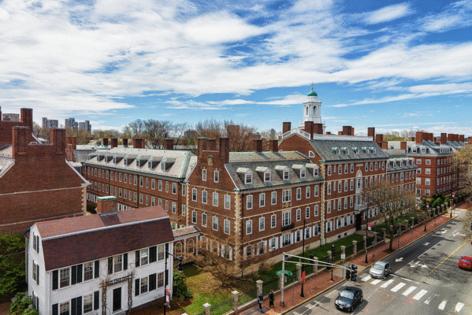Harvard says latest freshman class is more Asian, less Black
Published in News & Features
Harvard University reported admissions data showing that the share of Asian American students in its freshman class rose while the percentage of Black students fell for the second straight year.
Asian American students make up 41% of the latest group of first-year students at Harvard College, up from 37% a year earlier, according to a report released Thursday. The share of freshmen identifying as Black or African American fell to 11.5% from 14%, while Hispanic or Latino students dropped to 11% from 16%. The data are self-reported.
The figures mark the second full enrollment cycle since the U.S. Supreme Court’s 2023 ruling that struck down race-conscious admissions. Harvard was a named defendant in that case, in which the school was accused of discriminating against Asian American applicants. While Harvard denied the allegation, the court decision forced it and other universities to overhaul how they consider applicants’ backgrounds and experiences — without using race as a factor.
“Amidst several seismic shifts in higher education admissions over the past few years, as well as the effects of Covid, the Class of 2029 enters Harvard as worthy successors to the generations of students who’ve come before them,” William Fitzsimmons, dean of admissions and financial aid, said in the statement.
Harvard has been the main target of President Donald Trump’s efforts to reshape higher education, a campaign that started with accusations that prominent schools failed to crack down on antisemitism but later grew into a broader attack on diversity programs and perceived political bias.
The government froze more than $2.6 billion in federal research money for Harvard, threatened its tax-exempt status and sought to block the enrollment of foreign students. The research funding has been largely restored after a judge ruled the administration illegally halted it. Harvard also sued over the government’s attempt to bar foreign students.
International students accounted for 15% of Harvard’s incoming class, down from 18% last year but roughly in line with the share during the two years before that, according to the university. This year 1,675 students accepted Harvard’s offer, and eight foreign students asked to defer.
The changes at Harvard mirror national trends following the Supreme Court’s admissions decision. For decades, race-conscious policies helped increase enrollment among Black and Hispanic students at selective institutions. Supporters of the 2023 ruling say it promotes fairness for Asian American and White applicants, while critics warn it will make campuses less diverse and representative of the country.
This year’s incoming class is also the first since before the pandemic in which applicants were required to submit standardized test scores, following several years of test-optional admissions.
Harvard announced in March it would bolster financial aid, eliminating tuition for students from families with incomes of $200,000 or less. About 21% of the Class of 2029 is estimated to be eligible for federal Pell grants for low-income students.
©2025 Bloomberg L.P. Visit bloomberg.com. Distributed by Tribune Content Agency, LLC.







Comments